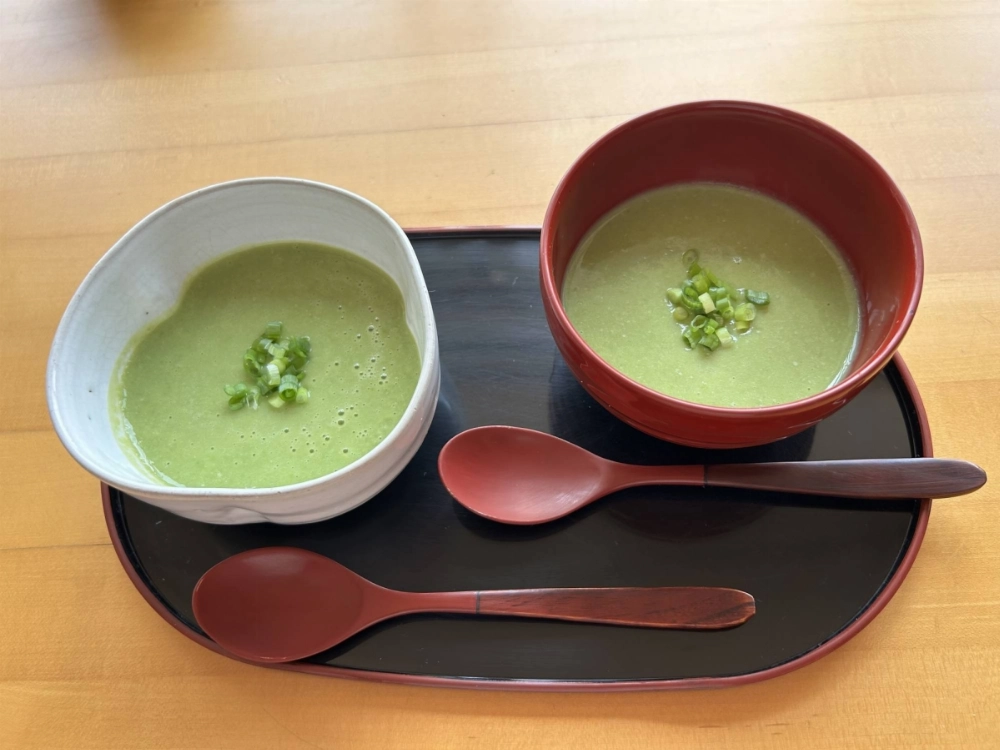On Japanese menus, pureed soups called surinagashi-jiru (literally, “grind, pour, broth”) are a great way to showcase seasonal produce. In May, that means tender, verdant peas will be what gives these soups their flavor. In keeping with the washoku (traditional Japanese cuisine) tenet of using ingredients fully — even the pods that are often discarded after shelling will be used to enhance the taste of the dashi stock.
Since surinagashi soups highlight seasonal bounty, additional flavoring is usually kept to a minimum. With the recipe below, for instance, just a touch of sweet white miso mixed with soy milk is enough. However, many soups are finished with an aromatic or spicy garnish — scallions or chives, in this case. Depending on the weather and your mood, the soup can be served either piping hot or chilled.
In the old-fashioned Japanese kitchen, making surinagashi required several different tools to grind and mash any steamed or lightly boiled vegetables. A grooved mortar called a suribachi — literally, a “grinding bowl” — was (and still is in many kitchens) used to produce such mash, with dashi added to the suribachi afterward to help flush any bits of vegetable stuck in the grooves. A fine-meshed sieve called an uragoshi can be used instead of or alongside a suribachi, to produce a smoother, pulpier texture.

















With your current subscription plan you can comment on stories. However, before writing your first comment, please create a display name in the Profile section of your subscriber account page.